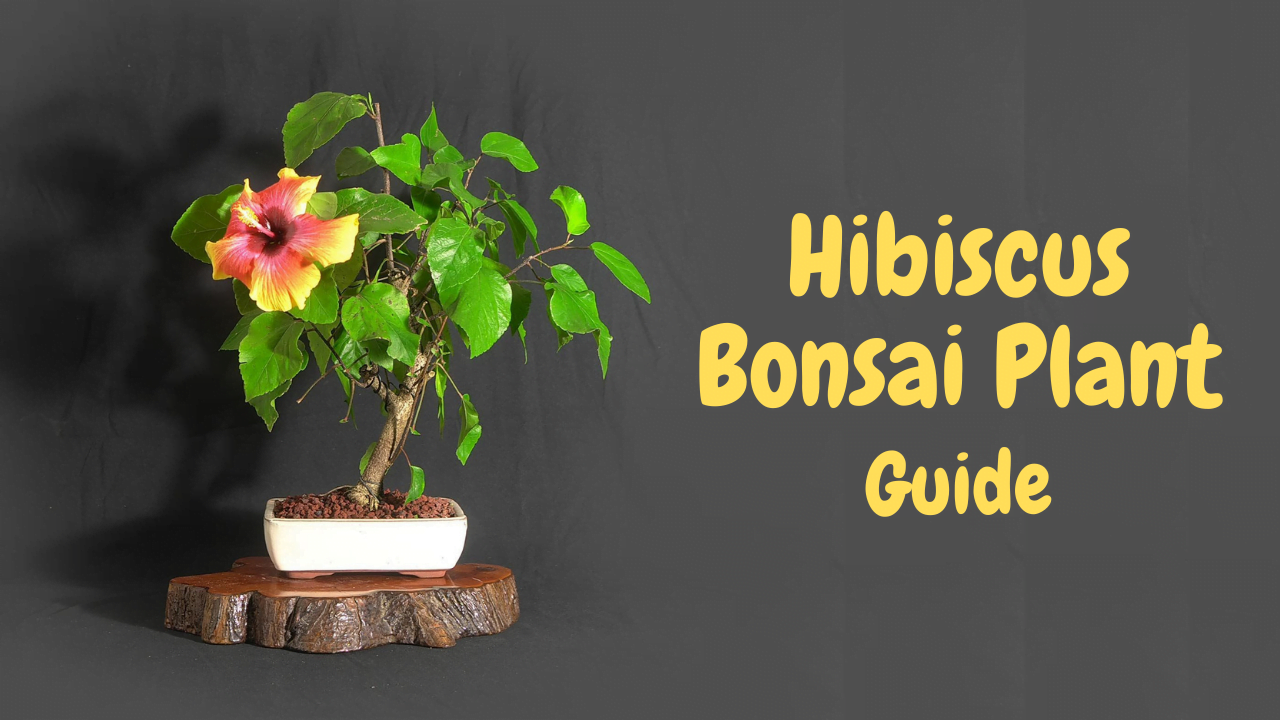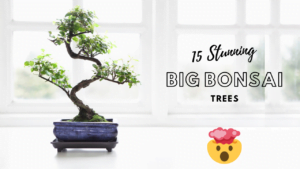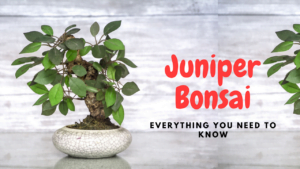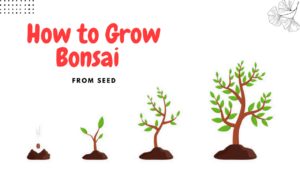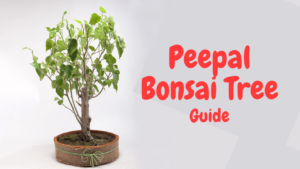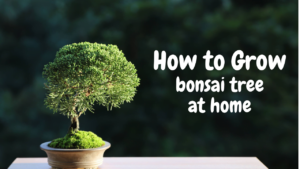Surprised by the name “Hibiscus”.. It’s your favorite “Gudhal ka Phool”. Let’s deep dive and see how to take care of “Gudhal ke Phool ka Ped”.
Nothing is more stunning, bright, or unusual than a hibiscus when it comes to flowering bonsai. The big leaf and flower size can be overwhelming for anybody attempting to create a bonsai from a hibiscus. Still, the Hibiscus bonsai plant is a stunning one that produces vibrantly colored flowers throughout the growing season and offers a broad choice of flower colors to pick from.
In a world full of flowers looking similar, how will you identify the hibiscus bonsai plant? Let us take you through it.
Buying a flowering bonsai tree can be an excellent way to add natural beauty and tranquility to your indoor or outdoor space. Online retailers and local nurseries offer a variety of species, sizes, and styles to choose from. It’s important to research the specific care requirements of your chosen tree and ensure you have the appropriate environment and resources to care for it properly. With a little research and attention, a flowering bonsai tree can bring joy and beauty for years to come.
How to Identify Hibiscus Plant Varieties
Family and Native Region: The Hibiscus bonsai plant is a vast flowering plant that belongs to the mallow family and has hundreds of species. It grows best in warm, sunny conditions and responds poorly to near freezing and below-freezing cold. Hibiscus bonsai tree is native to tropical, subtropical, and warm-temperate areas.
Color of Blooms: There are a variety of cultivars, hybrids, and types available of the bonsai hibiscus plant, with flower colors ranging from white to yellow and orange to red and shades of pink, and single and double sets of petals.
Note while selecting a Hibiscus Bonsai: When choosing a hibiscus for a bonsai, it’s crucial to determine whether the plant is a hardy or tropical hibiscus. Tropical hibiscus plants require a lot of light to blossom, and while it’s a good idea to keep them covered throughout the summer, they’ll need all the light they can get during the shorter days of winter.
Unfortunately, most garden centers and nurseries will not identify hibiscus plants by kind. They will most likely be grouped together, leaving it up to the consumer to determine which variety they have purchased.
Leaves of Hibiscus Bonsai: The leaves of the tropical Hibiscus bonsai tree are glossy and deep green, and the flowers are extensive and ranging in hue from red to pink to orange to yellow, with a diameter of three to six inches. On the other hand, the Hibiscus is a perennial, resilient hibiscus with dull green, heart-shaped leaves and white, pink, or red flowers that reach dinner plate diameter.
Temperature suitable for the Hibiscus Bonsai Plant: Over the winter, the hardy hibiscus bonsai plant requires minimal additional attention. However, tropical Hibiscus should be treated as a tropical plant. Avoiding cold, moist weather and soil and bringing the plants inside before the temperature drops below forty to forty-five degrees at night can help protect the bonsai hibiscus plant.
Now, when you have identified your hibiscus bonsai tree, let’s hop onto the care procedures for the same.
Hibiscus Bonsai Care Guidelines
We have laid down the tips and techniques for caring for your bonsai hibiscus plant.
Placement
The Hibiscus bonsai plant thrives in full sun or partial shade. Tropical plants need to be protected from frost and brought indoors during the winter. Grow lights are helpful for overwintering plants inside. When planted in a tiny bonsai pot, Hibiscus syriacus is hardy, but you should shield it from harsh frost. Hibiscus bonsai tree thrives in a cold, frost-free greenhouse throughout the winter.
(Because the Hibiscus is a tropical plant, it will perish if frozen. It’s time to bring your bonsai hibiscus indoors for the winter when the overnight low temperatures fall below 55 degrees.
Bring your bonsai hibiscus plant back outside when the low temperatures are reliably above 55 degrees.)
Watering
Even though all Hibiscus bonsai plant adores light, dryness will kill them. When growing a Hibiscus Bonsai tree, it’s important to remember to water it frequently, if not daily, to keep it from drying up.
Note: It’s a warning that your bonsai isn’t getting enough water if flower buds fall off or the foliage begins to yellow.
Points to remember:
- Make sure your Bonsai hibiscus plant is in well-drained soil and that it does not become too wet or dry.
- Ample water will assure a plentiful supply of blooms; however, floods will result in root rot. You will require to provide the hibiscus bonsai plant with less water during the winter than during the summer.
- To reimburse for the drying effect of indoor humidity, spraying their leaves at least once a day is recommended.
- Place each pot on a humidity tray packed with gravel and water to help the hibiscus bonsai tree stay humidified.
- The water in the tray will evaporate, the humidity near the plants will rise. Root rot and leaf loss can occur if a potted Hibiscus bonsai tree is placed on saucers with standing water.
Fertilizing
Assuring that your bonsai Hibiscus plant is planted in soil with enough good compost can go a long way toward creating a favorable environment for flowering. Some people use NPK 10-40-10 fertilizers to increase the number of blooms. Still, while this may seem like a good idea at first, it will eventually cause your bonsai hibiscus plant to flower less and less and will stress the plant’s health, making it susceptible to diseases; instead, use a 7-2-7 fertilizer in the spring.
Because your bonsai is growing in such a small amount of soil, it is vital to refill the soil’s nutrients regularly. Except during the winter, solid organic fertilizer should be administered once a month and use a liquid fertilizer every week.
Pruning and Wiring
In the early stages of bonsai development, you can clip the branches and shoots of the hibiscus bonsai tree heavily and frequently to achieve an excellent ramification. Shorten young shoots on mature trees, leaving one or two leaves. Never prune your hibiscus bonsai in the late fall or winter because it will kill new growth. Use very sharp pruning shears to prune your Hibiscus. Make 1/4-inch cuts above a leaf bud heading in the direction you want your plant to develop.
Hibiscus plants are wire-tolerant. On the other hand, young wood tends to bounce back. Hibiscus can be wired however careful bending is required because the branches are easily broken. As a result, using turnbuckles and guy wires to bend the trunk or branches may be necessary.
Repotting
Repotting provides your hibiscus bonsai tree with new soil and develops a more compact root structure. Most deciduous trees need to be repotted every two to three years, while evergreens should only be repotted every four to five years.
When the root of the hibiscus bonsai plant has filled the pot, you must repot it regularly. Because trees grow at varying rates, this plan may not always be accurate; consequently, you should check your tree’s root system each year to see if it has become pot-bound.
When done correctly and at the right time of year, the potting process of the hibiscus bonsai tree is usually simple and safe. Mid-summer is the best time to repot.
The process of repotting a hibiscus bonsai plant is:
- You should take the hibiscus bonsai tree of the pot, together with all of its soil.
- You should also remove the tree’s exterior and bottom fourth of root mass.
- It is accomplished by raking the soil away and then cutting the roots back. In most circumstances, pruning back more than one-fourth of a tree’s root mass is not recommended.
- After that, the hibiscus bonsai plant can be returned to its original pot or placed in a new one. You should cover the drainage holes in the pot with a screen.
- Then, for drainage, you should place a thin layer of small gravel in the bottom of the pot of the hibiscus bonsai plant.
- When the new fresh dirt is laid on the gravel, place a layer of well-draining soil on the hibiscus bonsai tree.
- Raise it to its prior height in the pot.
- After replanting the Hibiscus bonsai plant in the pot, fill the space left by the pruned root mass with fresh soil.
- You should water your bonsai hibiscus plant thoroughly after repotting.
Note: It’s essential to have soil that retains moisture while still permitting drainage: A good equilibrium is 50% organic matter and 50% aggregates in the soil of the bonsai hibiscus plant.
Propagation
The majority of tropical plants sold in garden centers are “garden varieties” produced from root cuttings, with certain kinds being easier to root than others. Hibiscus bonsai tree can be grown from seed or cuttings in the spring and summer. There’s also the option of air-layering in a hibiscus bonsai tree.
The Hibiscus bonsai plant is commonly rooted on perlite in plastic pots. It will be necessary to use a rooting hormone, and it is critical to keep the medium moist at all times. Place 15 to 20 cuttings in a six-inch container and keep them warm, humidified, and well-lit for six to eight weeks.
Pests and Diseases
Your hibiscus bonsai tree is small, and you may treat it like any other tree for insects and diseases. Pests and illnesses don’t seem to bother hibiscus trees.
Chlorosis can be caused by overwatering with calcareous water or a lack of fertilizer. In this situation, use a ferrous fertilizer. Aphids, whiteflies, and Japanese beetles can harm the bonsai hibiscus plant. Leaf spot, canker, and flower blight are some diseases that affect plants.
Take your hibiscus bonsai tree outside on a warm winter day and spray them down to eliminate the problem without using chemicals. Alternatively, you can place them in your bathtub or shower and thoroughly spray them. While this will not entirely eliminate pests, it will help control them while also cleaning your hibiscus bonsai plant.
You can also spray your bonsai hibiscus plant with a solution of 1 teaspoon dish soap to 1-quart warm water, making sure to rinse the solution off thoroughly. For most pests, this method is usually quite effective.
Conclusion
The Hibiscus bonsai plant is a fast-growing plant that may quickly be grown in a tub or in the ground to develop a thick trunk. Because it is simple to construct a framework, flower color and size should be a top priority when selecting a tree from an online store, as it is the one aspect of the tree that you cannot change.
Your bonsai hibiscus plant will stay healthy, beautiful, and petite for many years if you take excellent care of it. Your hibiscus bonsai tree will grow in beauty as it matures over time because it is a small living tree.

